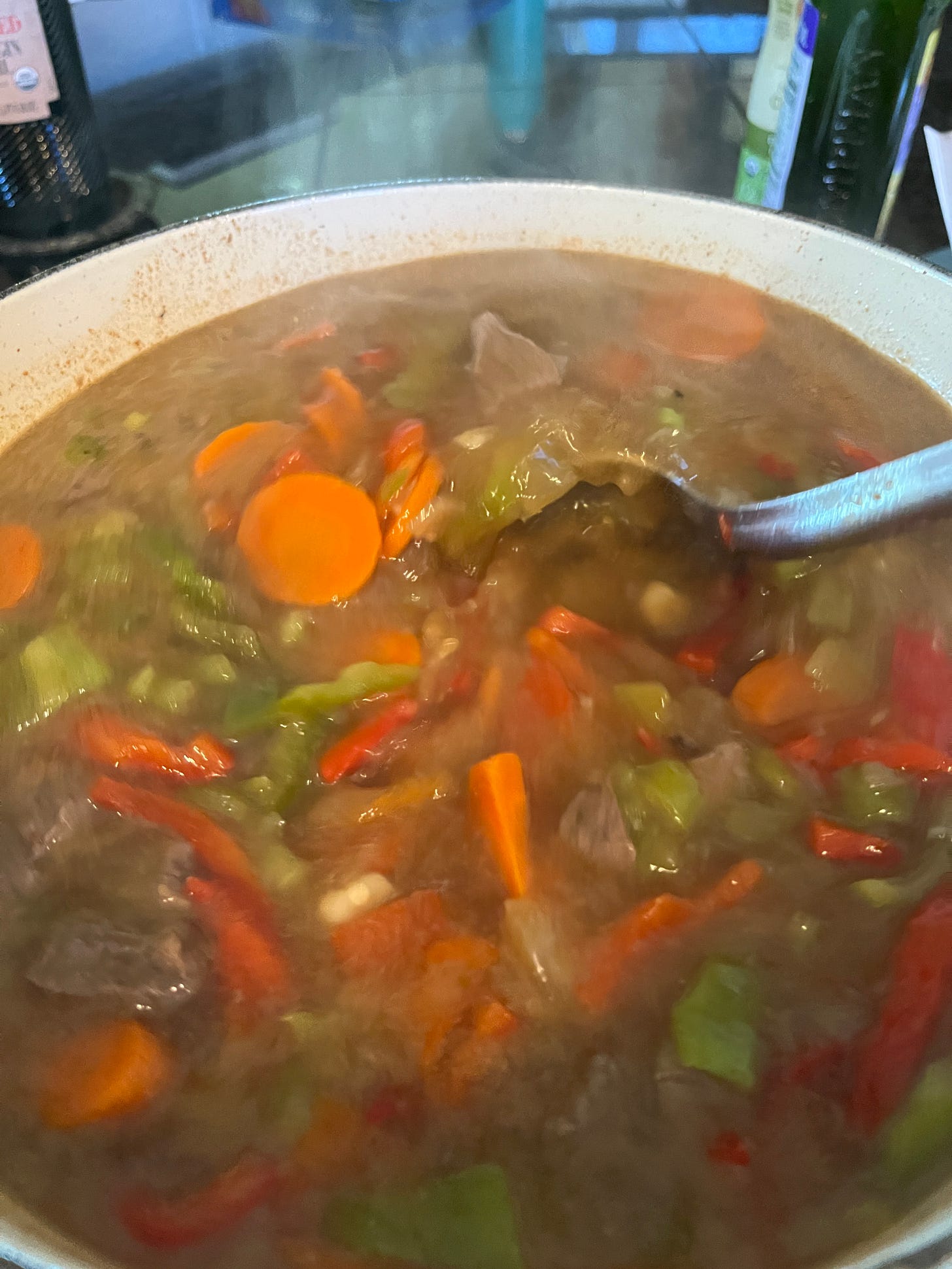Harvest Moon
The Supermoon turns the tide
Last week’s Harvest Supermoon switched gears on the season. Tomatoes are 2023 history now, along with sweet corn and cucumbers, those juicy boys of summer. Turn, turn, turn, we are moving into fall and a change of crops and flavors.


It’s Indian Summer in New York City, if it’s ok to say that these days. We were there last week for work in the Lower East Side and the weather was warm and sunny, after the horrific rains that caused so much flooding. Though the exact origins of the term Indian Summer are hazy, it was part of the language of the New World by 1820 when John James Audubon described “The Indian Summer that extraordinary Phenomenon of North America” and complained about smoke from Native American fires. In another statement, Audubon proclaimed his great respect for Native Americans: "Whenever I meet Indians, I feel the greatness of our Creator in all its splendor, for there I see the man naked from His hand and yet free from acquired sorrow."
I don’t, to my knowledge, have even one Native American friend that I can run the term by to judge its PC quotient. My exposure to Native American traditions is from books and from the grocery list for a Foods Lab course, Nutrition 421: Cultural Foods, that I used to do the shopping for in another lifetime. The chapter on Indigenous Foods of North America included an easy Pumpkin Soup recipe as well as an Apache Stew that used wild game that was a little harder to track down. It was usually a gift of venison from a friend given in trade for some of the prepared stew. I was never able to track down tumbleweed greens in Central PA, though there are plenty of those and other greens like Prickly Lettuce in my yard in Wyoming. Native people ate with a sense of place that is currently lacking in our culture.

Last year at the Slow Food in the Tetons’ Farm to Fork Festival I had the great pleasure to observe Sean Sherman prepare a Native stew using items that he found at the farmers market in Jackson and gathered from the local surroundings. Especially intriguing to me was his use of blue spruce to enhance the stew, much in the same way that rosemary would be used for flavoring.



Sean Sherman is an Oglala Lakota Sioux chef and cookbook author who champions indigenous cuisine that relies on foraged and local, seasonal foods. His TED talk “Why there aren’t more Native American restaurants?” explains the cultural desecration that effectively rendered the North American Native society invisible in our country today. Best of all, he offers a solution that is viable.

What if dining across the main arteries of America, now so dependent on Sysco trucks and chain fast food outlets, featured indigenous restaurants that celebrated regional foods? How interesting would that be? Massachusetts, clam and seafood shacks; Michigan, white fish and cherries; Minnesota, wild rice; driving through each region would be a voyage of discovery and connection. According to Sherman, there are 573 federally recognized tribes in the US. Let’s celebrate them this Indian Summer!
Apache Stew
This is a version based on a recipe from Dr. Dorothy Blair’s Nutrition 421 manual. It is easy to make, after roasting and peeling the peppers, and provides a hearty lunch or supper for a fine autumn day.
Serves 8
2 red peppers
5 Anaheim peppers
3 hot peppers, any color (I used what I had left of cayenne and Fresno peppers from my Pink Cadillac delivery)
¼ cup sunflower oil
One pound stew meat of venison, elk, bison, antelope, or substitute stewing beef
1 large onion, diced
3 cloves garlic, minced
2 large carrots, sliced
3 cups canned or cooked hominy
8 cups water
2 teaspoons salt
1 teaspoon freshly ground pepper
3 cups tumbleweed greens (or substitute kale, curly endive, or turnip greens)
Roast the peppers over an open flame or under the broiler and then peel and seed the peppers and slice them into 2-inch strips.
Heat the sunflower oil in a large Dutch oven until hot and add the meat cubes, browning on each side. Season lightly with salt while you saute. Remove the cubes from the pan when they are browned and add the onions to the hot, meat-flavored oil. Brown the onions over medium-high heat and then add the garlic and stir around. Add the sliced carrots, the hominy, the water, and salt and pepper to taste. Put the browned meat cubes back into the pot along with all the pepper strips and turn the heat to low. Cook, uncovered for a couple of hours then add the greens, adjust the seasoning, and serve.





Wonderfully written, on point, as usual!!! Thanks for sharing❣️🙏